Dutch beet hybrid “Action f1”: characteristics of the crop and secrets of proper care for it
Action F1 is a hybrid of mid-season beets. It has many positive qualities, which is why it is so popular among Russian gardeners. To grow a rich and high-quality harvest, it is enough to follow the rules of crop rotation and crop care. Read our article about how to do this correctly.
Description of the variety
Action F1 is a hybrid form of red beet with a powerful root system and leaf rosette. It is classified as mid-season, since 100-105 days pass from the appearance of the first shoots to harvest.
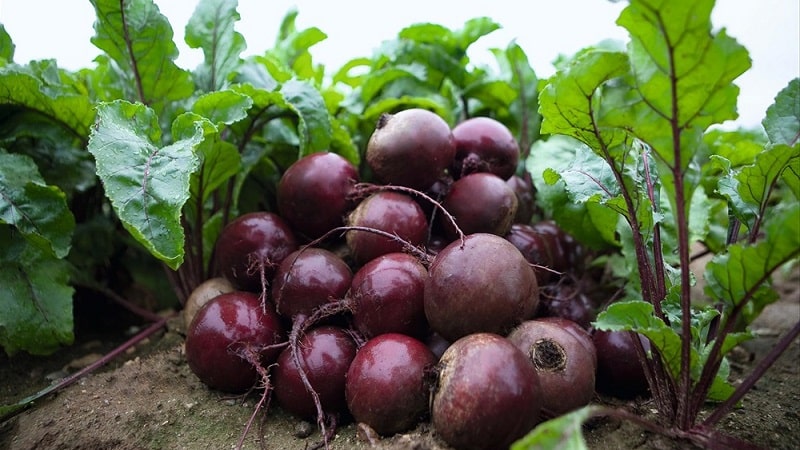
The plant has a large and strong rosette of erect, smooth leaves. Their plates are painted soft green, and the petioles and veins are purple. With age, the foliage becomes darker in color.
The culture is resistant to flowering, tolerates frosts and dry periods well, and is therefore suitable for cultivation in all regions of Russia.
Origin and development
Historical reference. The cultivation of beets dates back to the ancient Greeks, who greatly valued the culture, and its fruits were available only to the richest and most influential people. The first specimens were brought to Kievan Rus from Byzantium back in the 10th century. In epics it is often mentioned that beets supposedly increased the strength of heroes, helping them fight monsters and enemies.
Hybrid Action F1 was bred by Dutch breeders at the end of the 20th century. A few years later it was officially recognized in Russia and included in the State Register.
Distinctive features
Action F1 differs from other beet varieties:
- stable and rich harvest;
- color resistance;
- tolerance to frost and drought;
- smooth root vegetables without rings on the pulp;
- suitability for bundled products.
Fruit characteristics, yield
The root crops of the hybrid are only half immersed in the soil, they have a round shape without obvious irregularities and juicy flesh of a rich red color without rings. Beets have a distinct taste, so they are actively used in cooking and grown for long-term storage for the winter.
From 1 m2 you can harvest up to 10 kg of crop. The average fruit weight is 150-200 g, but there are specimens weighing up to 350 g.
How to grow
Action F1 is considered an unpretentious and stable hybrid. But to obtain a bountiful harvest, it is important to plant correctly and then provide the crop with the necessary care.
Planting with seeds/seedlings
To plant beets, choose a bright place with loose and light soil., rich in organic matter. It is better to avoid clay soils or dilute them with river sand, since heavy soil reduces the quality and quantity of root crops, and also gives them an ugly shape.
Sowing in open ground is carried out in the second half of May, and for seedlings at the beginning of the last month of spring.
The planting scheme is presented in the table:
| Seeding rate | 1 g/m2 (70-80 pieces) | |
| Depth of planting seeds in the soil | sandy and sandy loam soils | 3-4 cm |
| loamy | 2-3 cm | |
| Distance between | in rows | 30 cm |
| sprouts in a row | 10-15 cm | |
Instructions for sowing in open ground:
- Dig the soil to a depth of 10-15 cm, break up all earth lumps and remove weeds.
- Fertilize the bed with compost or humus - 2.5 kg/m2.. Also add 20 g of ammonium nitrate, 35-40 g of superphosphate and 15 g of potassium chloride (proportions are indicated per 1 m2).
- Form furrows 2-4 cm deep, water them and sow.
- Cover the seeds with loose and light nutrient substrate and water the bed well.
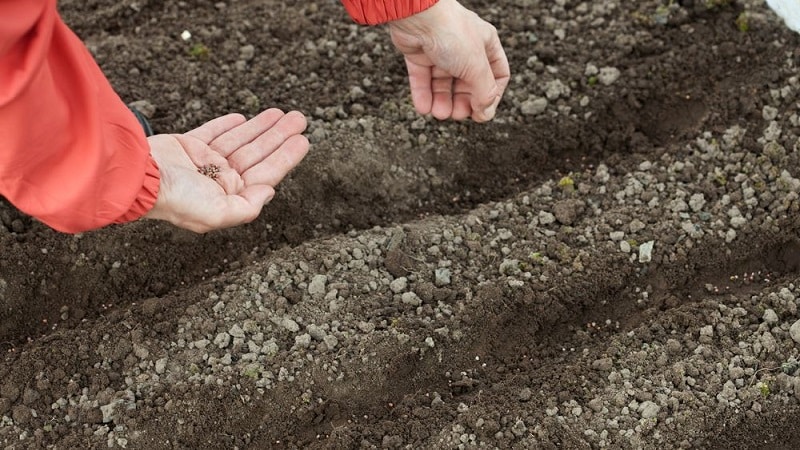
Some gardeners, especially from the northern regions of the country, prefer to plant beets using seedlings. This allows you to get a larger harvest 18-22 days earlier than when planting directly in open ground.
About other beet varieties:
Technology for obtaining seedlings:
- Prepare the soil mixture. Combine peat, humus, rotted compost, turf or garden soil and river sand in a ratio of 4:2:2:1. For every 5 kg of mixture, add ½ cup of wood ash. Sift the substrate and heat it in a frying pan with a thick bottom or keep it in a double boiler for an hour.
- Dip the seeds into a growth stimulator solution for one minute. “Kornevin” has proven itself well.
- Fill the containers with soil and sow, deepening the planting material by 2 cm.
- Moisten the plantings with a spray bottle so as not to wash away the seeds.
- Cover the box with plastic wrap and put it in a warm place. After the first shoots appear, remove the improvised greenhouse.
After the formation of two true leaves do thinning: remove all weak shoots so that there is a distance of 5 cm between plants. Further care of the seedlings consists of regular and moderate watering - it is enough to prevent the soil from drying out too much.
Transplantation into open ground is carried out when the sprouts get stronger and acquire several leaves.This usually happens in late May-early June.
Attention! Before sowing, it is useful to sort the seeds by size and plant the same ones in the same row. This will allow you to get uniform shoots.
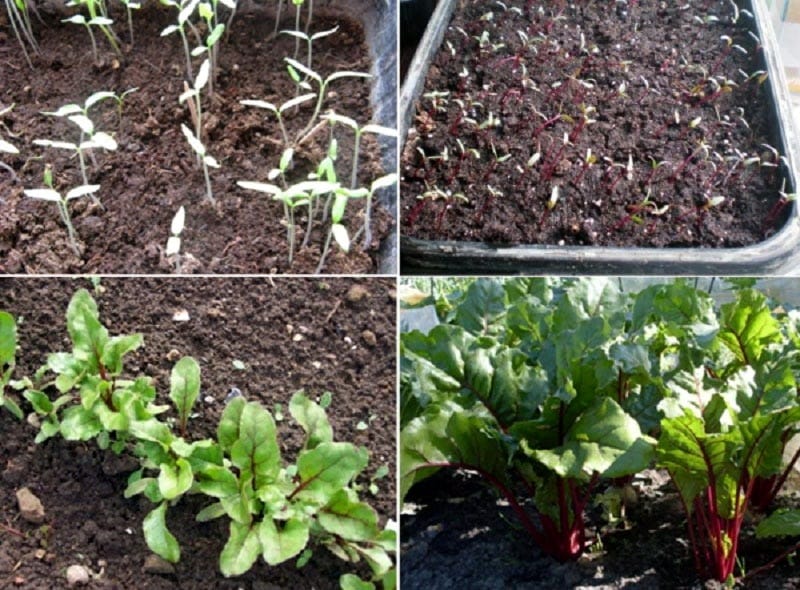
Care
Beet care Action F1 includes following procedures:
- Watering - once a week with warm water. During dry and hot periods, the amount of watering is increased to 2-4 times a week.
- Thinning - the first time is carried out after the appearance of 2-3 true leaves, the second - after the formation of 7-8 leaves. Do not forget that you need to leave a distance of 10-15 cm between the sprouts.
- Loosening and weeding are carried out as necessary to remove earthen crust and weeds that prevent air and moisture from penetrating to the roots of plants.
- To feed beets, potassium chloride is added to the soil once every two weeks: 70 g of the product is diluted in a bucket of water and used for watering. 300 ml of solution is poured under each plant. To avoid the formation of voids in the fruits, plantings are fertilized once with boron fertilizer.
- Mulching the beds is done with dry compost and humus. They will not allow moisture to evaporate and prevent the bed from becoming waterlogged.
Attention! Beets are prone to accumulating nitrates, so they cannot be fertilized with nitrogen fertilizers.
Features of cultivation and possible difficulties
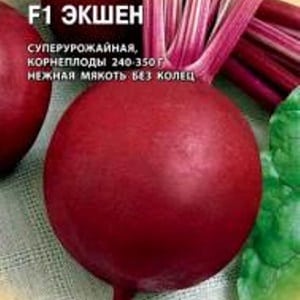 When growing beets, it is important to follow all care recommendations. Experienced gardeners do not have difficulty planting beets, but beginners may face such problems:
When growing beets, it is important to follow all care recommendations. Experienced gardeners do not have difficulty planting beets, but beginners may face such problems:
- The fruits crack and grow slowly. Uneven watering leads to this. To eliminate the problem, it is necessary to normalize the moisture regime of the beds.
- The beets are small and have an irregular shape. Sowing was done in too dense and heavy soil.
- High air humidity, frequent rains and waterlogging of the soil can lead to the appearance of a disease such as dry rot. To eliminate it, you need to add a borax solution to the garden bed (10 g of the substance is diluted in 10 liters of water).
Reference. Salt will increase the sugar content of the crop and improve its taste. To do this, a glass of salt is dissolved in a bucket of water. The solution is used to water the plantings at the roots.
Diseases and pests
Action F1 is a hybrid form that can independently resist diseases and pests. But if not properly cared for, a gardener may encounter similar problems. Means that are suitable for preventing and combating these troubles can be seen in the following table.
| Problem | Names | Remedies |
| Diseases |
|
1) 1 kg of ash, pour 10 liters of water, cover and keep in a sunny place for a week. Add 15-30 ml of liquid soap or dish gel and spray the beet bed.
2) Grind a bar of laundry soap into shavings and dilute with 40 g of copper sulfate in 7 liters of water. Use for spraying once every 1-1.5 weeks. 3) Dissolve 5 ml of Fufanon in 5 liters of water. Carry out two treatments with a break of 7-10 days. |
| Pests |
|
1) Add 500 g of lime to 10 liters of water and mix. Pour the tops of each sprout (the norm is 1 liter of product per plant).
2) Pour the whey packet into a bucket of water. Spread the mixture evenly over the beet tops. Treatment can be repeated every 3-5 days until the disease subsides. 3) Dilute 10 grams of Ridomil Gold in 5 liters of water and spray the plantings on a dry, sunny day. |
Harvesting and application
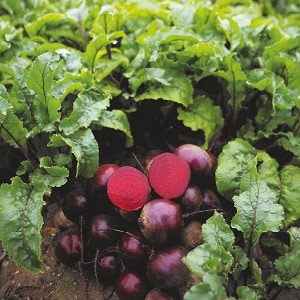 Beets ripen at the end of September, in the southern regions it is left in the ground until the first frost. But if the tops begin to turn yellow and dry, then it’s time to harvest.
Beets ripen at the end of September, in the southern regions it is left in the ground until the first frost. But if the tops begin to turn yellow and dry, then it’s time to harvest.
Root vegetables are carefully dug up with a shovel, trying not to damage the skin.. After this, the tops are cut 1-2 cm from the beets and the crop is laid out in the shade to dry. Then the soil is removed from the fruits and they are put into the cellar for storage.
Action F1 is used for the following purposes:
- marinate;
- added to soups;
- cooked for salads.
Read also:
Advantages and disadvantages
F1 action has many advantages, that’s why Russian gardeners love it so much:
- adapts to the conditions of detention;
- fruits of excellent quality;
- long shelf life;
- able to withstand cold weather;
- short growing season;
- tolerates dry periods well (with normal watering);
- innate resistance to many diseases and pests;
- not prone to color.
But like all garden plants, this type of beet has disadvantages:
- is not able to grow and develop properly in soils that are too dense and heavy;
- when there is a lack of water, it produces a meager harvest;
- Regular waterlogging of the soil is detrimental to the crop.
Farmer reviews
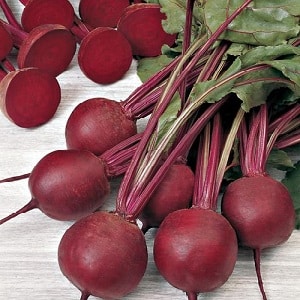 On Internet forums mostly positive reviews about the hybrid. Let us present some of them for you.
On Internet forums mostly positive reviews about the hybrid. Let us present some of them for you.
Maria, Lipetsk: “I chose this hybrid because it has a small top cut. I can’t say anything bad, but I think that elongated root vegetables are still better. Plus, Action F1 has hard leaves, and I like to add beet tops to summer cabbage soup.”.
Igor, Ekaterinburg: “An excellent vegetable without veins and rings, which, by the way, significantly spoil the taste of the pulp.Action F1 has the most expensive seeds of the beet varieties I have tried. Some people may not like this, but I want to note that their germination rate can be estimated at 90%, and if you use a growth stimulator to soak the seed, then at 100%.”.
Conclusion
Knowing the rules of growing and crop rotation will allow you to get a rich and tasty beet harvest. Action F1 is resistant to unfavorable conditions, as well as pests and diseases, so even novice gardeners can cope with cultivating a hybrid.